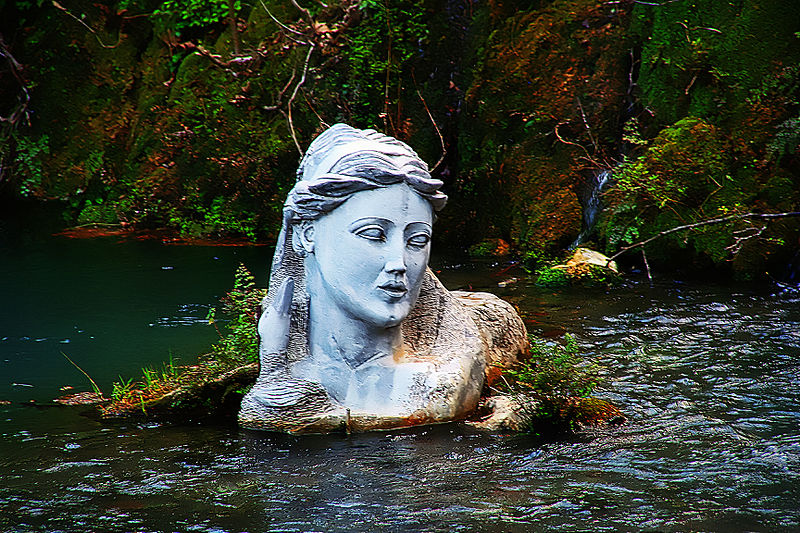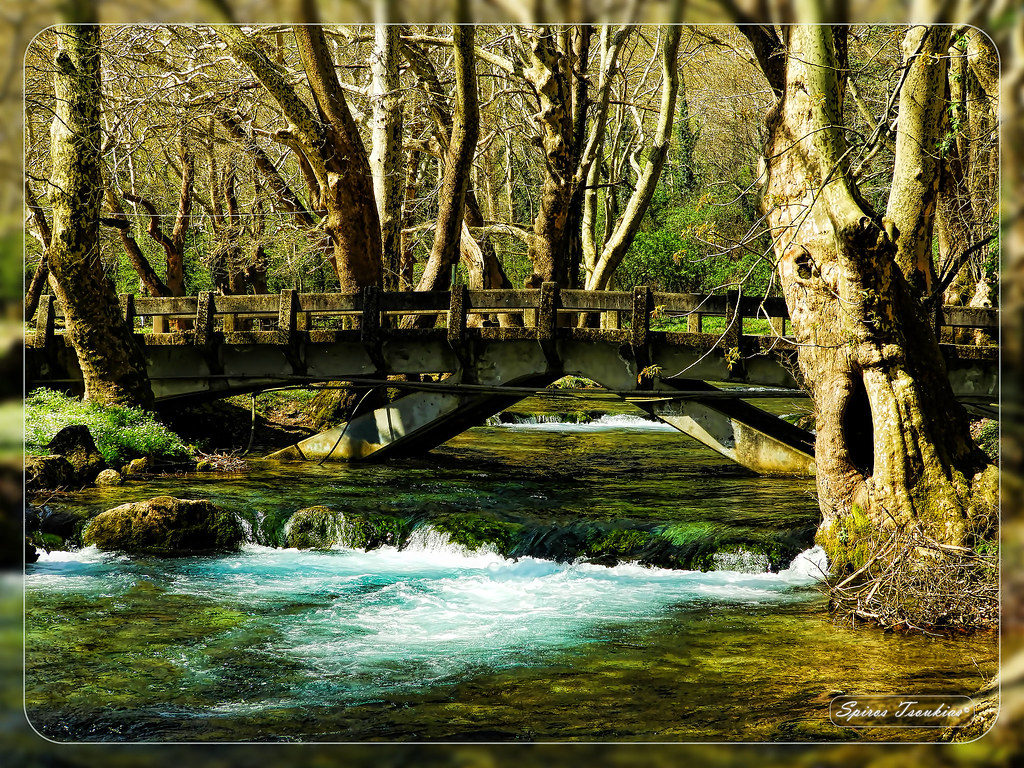Rivers of Greece are source of life.The gurgling waters of 5 feminine Greek rivers host species of terrestrial and aquatic flora and fauna.
With rare beauty that captivates, untouched by time, the rivers of Greece follow their own course through time, offering an oasis of coolness and an opportunity to wander to every traveler who will stand on their banks.
Greece possesses a total of 31 rivers, while only 5 are female, which stand out for their special characteristics, the rich vegetation and the history that accompanies them since the years of the Turkish occupation.
Erkyna

For those, who have visited the city of Livadia, the sight of the beautiful sculpture located in the middle of the Erkyna river created by the artist Spyros Gouriotis depicting the mythical nymph Erkyna has been etched in their memory.
In Greek mythology, Erkyna was the daughter of Trophonius and is said to have been the companion of Persephone, daughter of the goddess Dimitra. The two were casually playing one day with a goose near the city, in the grove of Trophonius. The bird escaped from them and went to hide in a cave under a stone. Persephone lifted the stone to catch the goose, with a spring shooting up from the earth: Ercyna’s spring.

In its waters, all the faithful, who sought a prophecy from the Oracle of Trophonio, which was located a short distance away, came to bathe.
Nowadays, this name is borne by the small river of the same name, which crosses Livadia. This river ensured for many years the necessary energy for the development of industry, handicrafts and the processing of agricultural products.
Presently, the river Erkyna with its sources in the area of Krya permeates the city of Livadia a special natural beauty.
Arapitsa

The Arapitsa River is inextricably linked to the history and economy of Naoussa. It comes from the grove of Agios Nikolaos, at the foot of Vermio.
Following a route of two kilometers between crops, it crosses Naoussa to then descend to the plain of Imathia, until it ends at “Tafros 66”, traveling about 10 kilometers.
Arapitsa owes its name to the dark hue of its waters. Its scenery awes every traveler, as it forms impressive waterfalls and its bed in the city is deep and steep.
Some believe that the river in ancient times was worshiped as the God Olganos, whose bust was found in its bed.
On the banks of Arapitsa, in the area of Nymfaion, in ancient times there was the School of Aristotle, where the great philosopher taught Alexander the Great.
At the waterfall of the Stubaans, left their last breath the heroes of Naoussaia, who died in 1822 so that they would not be enslaved by the Turkish conqueror.

In the younger years, the waters of Arapitsa contributed to the great economic development of Naoussa, as large textile factories, mills, etc., operated by using their energy.The waters of the river irrigate the city and assist to irrigate its fertile plain.
Ziliana

Ziliana is a deep and long ravine, about 15 kilometers long, that separates Mount Olympus from lower Mount Olympus. In ancient times the river was called Sys (wild boar).
Along its bed there are many alternations of images and morphology. The birth of the river is from the huge plateau where Sykaminea and Karya are located.
The basin of impressive dimensions is made up of metamorphosed rocks feeding the river with a large quantity and creating flooding phenomena.
Impressive boulders are scattered throughout the bed. Ziliana transforms and continues dry with a wide bed and large boulders.
Neda

One of the only rivers with a feminine name in Greece and the natural border between the prefectures of Messinia and Ilia, the river Neda has turned in recent years into one of the most important attractions in the area, both for nature lovers who wish to cross it, and and for those longing for beautiful peaceful images in dense vegetation, running waters and picturesque villages.
The river Neda took its name from the mythical nymph Neda, a water deity and daughter of Oceanus.
According to mythology, when Rhea gave birth to Zeus on Mount Lycaion, she entrusted his upbringing to the nymphs Neda, Theisoa and Agno, in order to save him from his father Cronus, who used to swallow his children for fear of dethroning him.
Nymph Neda was transformed into a river and her long braids of hair became beautiful waterfalls that decorate the passage of water in the gorge.
River Neda originates from Mount Lycaion through a rock near the village of Petra.

Its waters follow an amazing, meandering path through narrow gorges, cool plateaus and ravines smothered in vegetation, passing under stone arched bridges and through caves and creating waterfalls, to end up after a 32-kilometer course in Kyparissiakos gulf and the Elia beach.
The river in some places narrows too much and becomes deep and rapid and in other places it widens forming peaceful ponds.
The total of three waterfalls in various parts of the river Neda that end in natural pools with turquoise waters, are the most prominent points of the river.
In river Neda we will find unique aquatic vegetation with ferns, figs, plane trees, wild oaks, as well as the endangered species of oak called “Aria”. It also has a rich fauna, consisting of otters, rare reptiles, hares, crabs and even bats that are housed in Stomio, a cave about 80 meters long under which the waters of the river pass.
Neda River is one of the treasures of Greek nature, as this part is kept pristine and untouched by tourist development. Every summer, local associations and nature worship groups organise hikes in Neda.
Crossing one of the 5 feminine Greek rivers, due to its extraordinary beauty, is considered by many to be a unique life experience.
Ermitsa

Ermitsa, which originates from Arapokephala and flows into Lysimachia, marks the Aetolian area since ancient times. The border between the Eitaeans and the Eitanes (tribes of the Thestians) still preserves evidence of historical life in its wake.
It irrigates and fertilizes Etolokarnania. Its waters quenched the thirst of the people and watered the crops in the plain of Vrahori.
The distribution of Ermitsa’s water has been a matter of friction and competition between the aristocrats of the region.
Thus, an agreement was made between Alam bey of Vrahori and Mustafa Ali Spachi of Moustafouli for the sharing of the waters of Ermitsa in order to irrigate fields and people on both sides of the river. The waters of Ermitsa also moved mills and mantania along the river.

Sources Erkyna: www.iefimerida.gr Arapitsa: Geology & Hydrogeology: Nikos A. Kyros- Geologist www.medusa.libver.gr Ziliana: www.canyoning-caving.blogspot.com Neda: www.terrabook.com Ermitsa: www.agriniostories.gr
